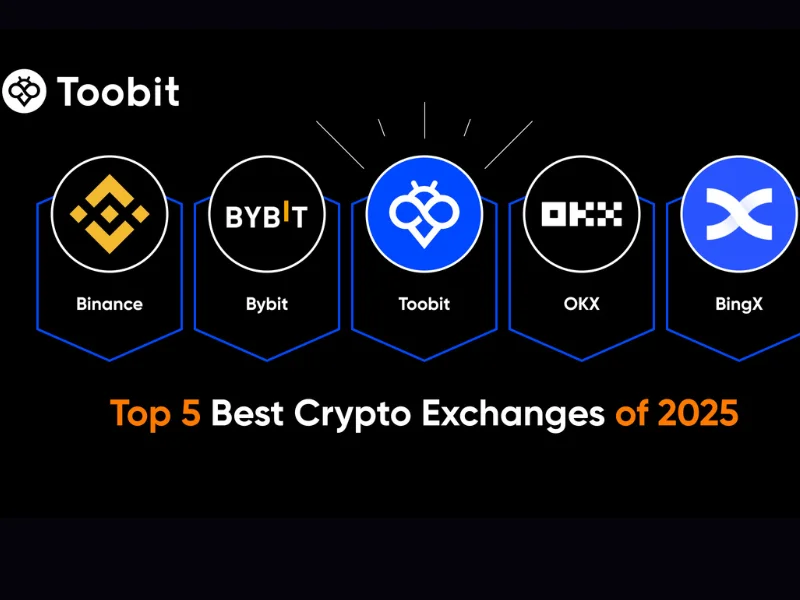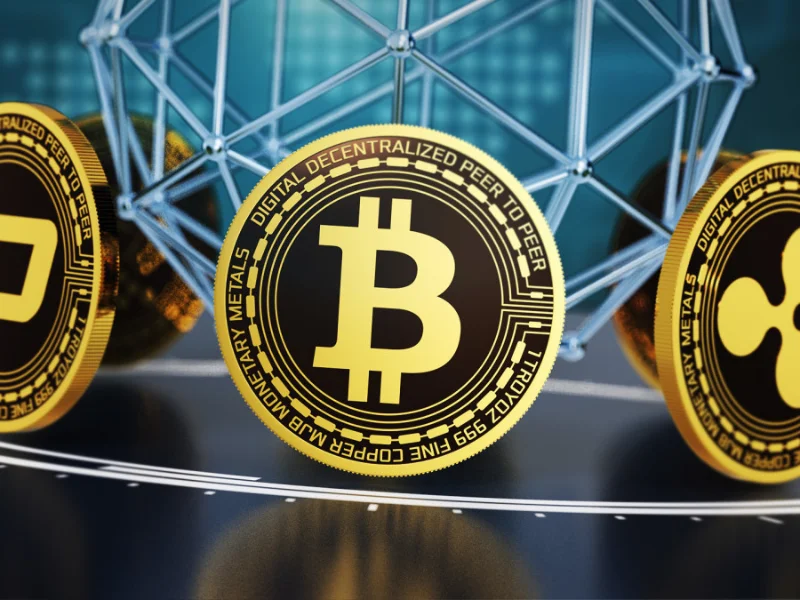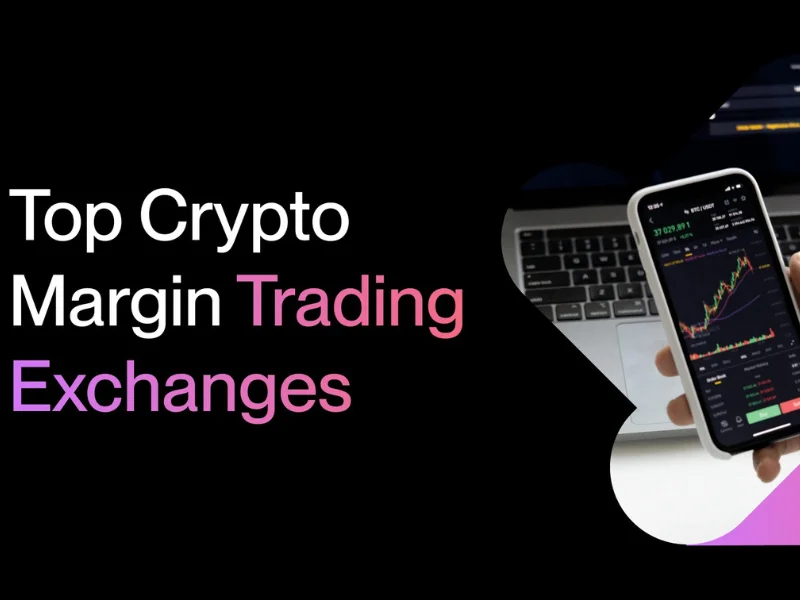1) Introduction
Purpose of the article. This piece gives you an analytical, up-to-the-minute tour of the Emerging Crypto Exchanges landscape so you can identify where the next generation of exchanges—and exchange-like venues—are likely to emerge. We’ll weave together market structure, on-chain data, regulation, technology, and adoption so that retail newcomers, seasoned crypto natives, and institutional allocators can quickly grasp what matters now. We’ll reference primary sources along the way, including CoinDesk, Glassnode, CoinShares, Bloomberg/Reuters, DeFiLlama, CoinGecko, and others.
Why staying current matters. Exchange leadership can shift fast. Just since 2023, market share, regulatory posture, product lines (spot, perps, options), and liquidity hubs have whipsawed, creating new winners (and losers). If you’re allocating capital, listing tokens, or building infra, stale mental models cost real money.
What you’ll learn. We’ll cover:
- Global market movements (caps, flows, leadership)
- Tech innovations (Ethereum’s Dencun/EIP-4844, L2 scaling, high-throughput chains)
- Regulatory resets (SEC case reversals, MiCA rollout, FCA supervision)
- Adoption (retail and institutions, stablecoin + ETF rails)
- On-chain activity, liquidity and venues (CEX vs DEX, TVL, derivatives OI)
- Case studies (Bitcoin halving cycles; Ethereum’s roadmap)
- Future outlook (NFTs, DeFi, stablecoins/CBDCs)
Expect a data-rich, source-driven read.
2) Global Market Trends
Current market performance & capitalization
Snapshot. As of August 26, 2025, global crypto market capitalization sits around $3.9T, with Bitcoin dominance near the mid-50s%. Short-term price action has cooled after mid-August all-time highs, but the year-to-date trend remains positive.
Leaders. Bitcoin printed new records on August 14, 2025 (>$124k), while Ether approached cycle highs, propelled by rate-cut expectations and continued institutional bid.
Trend analysis (24h/7d/events). The week after those highs saw a pullback tied to macro jitters around the Fed’s September meeting; ETF-linked flows turned choppy and funding stayed positive even as spot softened—classic late-stage bull behavior.
Embedded sources: market cap and dominance from CoinGecko’s global charts; price context and ATHs from Reuters/CoinDesk.
Institutional involvement & the macro-economic backdrop
Flows. CoinShares’ latest weekly fund-flows report logged $1.43B in outflows (largest since March) on Fed worries—reminding us that digital assets increasingly trade as macro-sensitive risk assets. Earlier in August, Ethereum actually led inflows amid a strong ETP bid.
Market structure. Open interest on centralized derivatives venues climbed in July, led by Binance, CME, and Bybit—another tell that institutions (from macro funds to pensions via ETFs) have deepened their participation across listed instruments.
Sentiment. After Jackson Hole, markets quickly repriced a near-term cut; Emerging Crypto Exchanges rallied initially then faded as investors digested policy uncertainty—exactly the kind of “risk-on, then caution” pattern macro traders expect.


3) Technological Developments & Innovations
Blockchain advancements at a glance
Ethereum’s throughput pivot—Dencun/EIP-4844. The Dencun upgrade (March 2024) introduced proto-danksharding (EIP-4844), adding blob data and materially reducing L2 data costs—an important unlock for exchange-like flows migrating to L2 perps/options, payment rails, and high-frequency dapps.
On-chain metrics context. Glassnode’s mid-2025 work highlighted a divergence: record prices vs. muted on-chain activity, indicating more trading migrating to ETFs, derivatives, and L2 venues while L1 settlement remains relatively quiet—a structural change in how liquidity expresses itself.
Security enhancements in Emerging Crypto Exchanges
ZK and smart-contract safety. ZK proofs now underpin many L2s and privacy-preserving protocols; combined with maturing audit practices and formal verification, they harden DeFi’s base layer. Still, 2025 has seen record theft, reminding teams to treat security as a continuous discipline, not a box-check. Chainalysis estimates $2.17B stolen in H1 2025, driven in part by a $1.5B Bybit incident attributed to DPRK actors.
Operational takeaway. Treat exchanges/dapps like critical infrastructure: circuit-breakers, bug-bounties, MPC/threshold signing, real-time anomaly detection, withdrawal delays for privilege-escalation events, and provable solvency/PoR.
Smart contracts and dApps
DeFi as rails. With L2 fees dropping post-Dencun, dapps (AMMs, perps, options vaults, RWAs) are scaling in both breadth and sophistication. Total value locked (TVL) and derivatives OI together suggest a maturing market where DEXs and CEXs interlock—CEXs remain the liquidity source of record for spot/on-ramps; DEXs excel at composable, long-tail risk. (TVL and OI context from DeFiLlama/CoinDesk.)
4) Regulatory & Legal Landscape
The big picture
United States: enforcement pivot. In February 2025 the SEC moved to dismiss its lawsuit against Coinbase; by May 2025 it also dismissed its Binance case. These are consequential signals of a policy reset and a move toward rule-writing over “regulation-by-enforcement,” even as other cases (e.g., Ripple penalties) continue through courts.
Europe: MiCA phases in. The EU’s MiCA entered into force in 2023 with staged implementation across 2024–2025, bringing stablecoin and CASP regimes into clearer view for operators pursuing licensure and pan-EU passports.
United Kingdom: promotions and supervision. The FCA has tightened financial promotions oversight and stepped up enforcement/engagement, putting stricter demands on UK-facing exchanges and affiliates.
Legal cases & precedents
Binance’s 2023 DOJ resolution (the $4.3B settlement; CZ stepping down and later sentenced to four months) reshaped the compliance landscape for global exchanges, accelerating investment in KYC/AML, monitoring, and board-level governance.
Implications. For “the next Binance,” regulatory credibility is no longer optional—it is a competitive moat. Exchanges that can prove licensure breadth, monitor oversight, segregation of client assets, and proof-of-reserves with auditable controls will out-compete purely fee-driven models.
5) Adoption & Market Sentiment
Retail and institutional adoption
How big is Emerging Crypto Exchanges today? Crypto.com Research estimates 700M global owners as of April 2025—a sharp expansion aided by ETFs, simpler wallets, and better fiat rails. Institutions are participating directly (CME, ETFs) and indirectly (on-chain RWAs, custody, prime brokerage).
Behavioral shifts. Retail often chases momentum; institutions ladder in via rules-based mandates (e.g., rebalancing to target weights) and through ETP products. Weekly CoinShares flow data confirms swings that now resemble traditional macro cycles: liquidity-sensitive, headline-reactive, but deeper and broader than prior cycles.
Social media and influencers
Signal vs noise. Social spikes can coincide with local tops/bottoms. Santiment highlighted volume/sentiment bursts lining up with key pivots in 2025—useful as contrarian signals when combined with funding and ETF flow data.
6) On-Chain & Market Activity
Why on-chain still matters
Core metrics. Transaction counts, active addresses, fees, and realized profit/loss help gauge organic demand. Mid-2025, Glassnode described an “on-chain ghost town” divergence: prices at records while base-layer usage lagged, implying more activity in off-chain ETFs/derivatives and cheaper L2s. That’s structural, not necessarily bearish.
Liquidity and market microstructure
Where’s the depth? Liquidity remains clustered across a handful of CEXs and U.S.-listed products, with Binance, CME, and Bybit among the leaders by derivatives OI in July. Spot share remains concentrated but is fragmenting at the margin as regional players gain.
7) Emerging Trends & Future Outlook
NFTs: from art to infra
NFTs continue to expand beyond collectibles into identity, ticketing, and gaming assets. Policy groups like Coin Center frame the debate around user rights (self-custody, privacy) that will shape NFT and broader digital-property adoption in the U.S.
DeFi’s evolution
With lower L2 costs and better risk tooling, expect perps/options vaults, intent-based execution, and RWA collateral to keep growing. TVL and OI data suggest a maturing split: CEXs for on-ramps, perps scale, and fiat liquidity; DEXs for composability and tail-risk expression.
Stablecoins & CBDCs
Stablecoins have become a primary settlement asset for crypto trading and increasingly for cross-border payments; policy and bank-integration will dictate the next leg. On CBDCs, a fresh BIS survey (2025) shows ~91% of central banks exploring CBDCs, even as the U.S. has paused retail-CBDC work while continuing wholesale research.
8) Investor Insights & Sentiment Analysis
Behavior patterns
Investors are navigating a market where macro (rates, dollar), flows (ETFs/ETNs), and on-chain (L2 costs, network activity) intersect. Glassnode’s post-ATH notes show cooling ETF inflows and fragile spot volumes—conditions where momentum can flip quickly.
Risk management in Emerging Crypto Exchanges
Practical steps that work across cohorts:
- Sizing & rebalancing: Keep crypto as a sleeve with drawdown limits; rebalance around realized volatility.
- Hedging: Use listed perps/options to cap downside; match tenor to catalyst windows (Fed, upgrades).
- Liquidity discipline: Enter/exit where depth lives (top CEXs, major pairs); avoid slippage traps on thin books.
- Counterparty risk: Prefer venues with clean regulatory footprints, strong PoR/audits, and diversified banking rails.
- On-chain hygiene: Use MPC or hardware wallets for treasury, strict multisig policies, and enforce spending limits.
9) Case Studies & Market Examples
Bitcoin halving events & price impacts
History rhymes, not repeats. The April 2024 halving reduced block rewards to 3.125 BTC, and—consistent with prior cycles—was followed (with lags and macro noise) by strong price action culminating in 2025 ATHs. Note that each cycle’s magnitude has moderated as the asset base grows.
Ethereum’s “2.0” transition in practice
The Merge is old news; the Dencun upgrade is the practical scaling win so far, slashing L2 fees and enabling higher-frequency dapp patterns (payments, games, perps) that look more “exchange-like” every quarter.
10) Impact of Global Events on Crypto
Economics: inflation, rates, and “digital gold”
Rate-cut expectations and a softer dollar underpin risk assets. Bitcoin’s August rally—then retrace—mapped almost one-for-one to Fed path repricing, reminding allocators to treat BTC as a high-beta macro asset with unique supply dynamics.
Geopolitics: sanctions, flight-to-quality, and rails
Chainalysis’ 2025 work shows illicit volumes and state-linked hacks rising, while some jurisdictions experiment withEmerging Crypto Exchanges for sanctions circumvention. This reinforces why regulated, compliant venues (and transparent stablecoins) will command a premium.
11) Key Insights from Industry Experts
- Glassnode: Post-ATH indecision, negative ETF flows, and an “air-gap” in liquidity—translation: respect the tape and manage risk.
- CoinShares: Flows swing hard week-to-week; Ethereum has recently led inflows proportionally—diversification beyond BTC is real.
- CCData/CoinDesk Data: Derivatives OI at year-highs with Binance, CME, Bybit in the lead—institutions are shaping price discovery.
12) So…where might the next Binance emerge?
Use this checklist to spot credible contenders:
- Liquidity gravity
- Depth/ spreads in BTC/ETH/USDT perps and top alts; growing share of derivatives open interest; healthy basis.
- Depth/ spreads in BTC/ETH/USDT perps and top alts; growing share of derivatives open interest; healthy basis.
- Regulatory credibility
- Licenses in key hubs; clean U.S./EU interfaces; public proof-of-reserves with auditor attestations; credible compliance leadership. The post-2023 Binance and 2025 SEC pivots raised the bar.
- Licenses in key hubs; clean U.S./EU interfaces; public proof-of-reserves with auditor attestations; credible compliance leadership. The post-2023 Binance and 2025 SEC pivots raised the bar.
- Product velocity
- Options, structured products, copy-trading for retail, block liquidity for institutions, and low-latency APIs. Fast listings aren’t enough; risk controls matter.
- Options, structured products, copy-trading for retail, block liquidity for institutions, and low-latency APIs. Fast listings aren’t enough; risk controls matter.
- Geographic strategy
- Regionalized fiat on-ramps and banking partners; local licenses (EU MiCA, UK FCA approvals where applicable), and strong language/localization.
- Regionalized fiat on-ramps and banking partners; local licenses (EU MiCA, UK FCA approvals where applicable), and strong language/localization.
- Security track record
- Bug-bounty culture, incident playbooks, MPC custody, withdrawal throttles—especially after 2025’s record theft year.
- Bug-bounty culture, incident playbooks, MPC custody, withdrawal throttles—especially after 2025’s record theft year.
Who’s in the conversation?
- Bybit, OKX, Bitget, MEXC have consistently appeared near the top of volume/market-share tables; CME dominates institutional futures; Coinbase/Kraken retain regulatory clout; emerging regional exchanges with MiCA/FCA-aligned builds could surprise. CoinGecko’s July 2025 spot-share shows Binance ~40%, MEXC ~8.6%; Kaiko/CCData put Binance, CME, Bybit atop OI. Don’t crown a “next Binance”—score the field with the checklist.


13) Conclusion
What we covered. We mapped the market (record caps then retrace), dug into institutional flows, explained how tech (EIP-4844) is pushing activity toward L2s and ETFs, tracked regulatory resets (SEC dismissals; MiCA progress), and distilled what to watch to spot the next exchange leader.
Why it matters. Exchange dominance is no longer a winner-takes-all game. The next leaders will combine depth + compliance + product + security—and be comfortable bridging CeFi, DeFi, and traditional rails.
Your action items.
- Track weekly CoinShares flows and Glassnode on-chain/ETF analytics.
- Watch CCData/CoinDesk Data monthly exchange reviews for market share/open interest trends.
- Monitor MiCA/FCA updates and U.S. policy shifts that can alter market structure quickly.
14) FAQs (10)
1) Which exchanges are gaining share right now?
Per CoinDesk Data’s July review, Binance, CME, and Bybit led derivatives open interest; CoinGecko shows Binance ≈40% spot share with MEXC ≈8.6%. Market share is fluid—use these monthly reports to track momentum.
2) Did the SEC really drop the Coinbase and Binance cases?
Yes. The SEC filed to dismiss Coinbase (Feb 27, 2025) and voluntarily dismissed Binance (May 29, 2025), signalling a policy shift toward rule-making.
3) How did the Bitcoin halving affect prices this time?
The April 2024 halving was followed by a 2025 ATH (> $124k). Historically halvings skew bullish, but magnitudes vary and macro/liquidity increasingly drive outcomes.
4) Is on-chain activity keeping up with price?
Not always. Glassnode flagged a price–activity divergence in mid-2025: record prices with subdued L1 activity as ETFs/derivs/L2s absorb flow.
5) Are hacks getting better or worse?
Worse in 2025 YTD: Chainalysis estimates $2.17B stolen in H1, driven by a single $1.5B service hack linked to DPRK actors. Defense has improved, but attackers scaled, too.
6) What’s the tangible impact of Ethereum’s Dencun upgrade?
Lower L2 data costs → cheaper transactions → more viable high-frequency dapps and exchange-like activity on L2.
7) How big is Emerging Crypto Exchanges now?
~700M owners globally as of April 2025, per Crypto.com Research; the slope is steep thanks to simpler products (ETFs, better UX) and regional on-ramps.
8) Stablecoins vs CBDCs—what’s next?
Stablecoins dominate Emerging Crypto Exchanges settlement and are probing cross-border commerce; BIS (2025) finds ~91% of central banks exploring CBDCs, while the U.S. paused retail CBDC work but continues wholesale research.
9) What metrics should I track to evaluate an exchange?
Market-share/OI, top-pair depth/spreads, uptime/latency, legal footprints (licenses), PoR/audits, security record, fiat rails, and product breadth (perps, options, staking, RWAs). See CCData/CoinDesk Data for monthly context.
10) What’s the single biggest risk right now?
Policy and macro whiplash. Flows hinge on rate expectations and regulatory posture; monitor CoinShares weekly flows, Fed policy, and key legal rulings. Position sizing and hedging matter.
